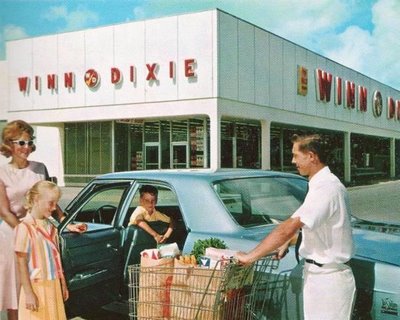 I’m fascinated with anthropology, particularly the anthropology of the family. As far as I’m concerned, food and the area used for preparation is the heart of the family whether the home is a cave, a nomadic tent or a suburban tract house. The process of procuring and preparing food for the nourishment of a family is important work. Norah would accomplish this task much the same as we do today. Her family would have eaten fewer convenience food items, with the exception being frozen vegetables, because pre-packaged items were comparatively more expensive.
I’m fascinated with anthropology, particularly the anthropology of the family. As far as I’m concerned, food and the area used for preparation is the heart of the family whether the home is a cave, a nomadic tent or a suburban tract house. The process of procuring and preparing food for the nourishment of a family is important work. Norah would accomplish this task much the same as we do today. Her family would have eaten fewer convenience food items, with the exception being frozen vegetables, because pre-packaged items were comparatively more expensive.

The same would apply for eating away from home. A fast food burger for an average cost of 20 cents seems like a real bargain to us, but in 1962 spending two dollars for a family of four was ten per cent of their entire food budget.
The first thing for Norah to consider would be transportation. Most families owned one vehicle in 1962. Arrangements to take her husband to work so she could keep the car for a day of errands was a scheduling necessity.
Next she’d look at her budget. Median family income in the early ’60’s was about $6,000 a year. Housing costs would be in the $100 per month range. For reference, a 1962 dollar had the buying power of $7.50 in 2011.
Norah would have had about $20 a week for her food and housekeeping budget. Staples like milk (49 cents/gallon), bread (20 cents/loaf), eggs (32 cents/dozen), would go into her cart first. Next she’d build meals around meat. Beef was a popular choice in the ’50’s and ’60’s. Chuck roast rang up at about 49 cents a pound and hamburger–not referred to as ground beef then–nipped the bottom line at about 40 cents a pound. For the cost of that fast food burger meal, Norah could prepare five meals based on one pound of hamburger each.

Meat loaf, anyone?
Ham, always a popular staple in the South, came in at 45 cents a pound. Chicken, the backbone of most Southern recipes was a budget-friendly option at about 29 cents a pound.
Fresh vegetables would have been a good buy for Norah. For example, corn priced at six ears for 25 cents would nicely round out a fried chicken dinner.
Frozen products were readily available, and the refrigerator of the time was equipped with a freezer perfectly shaped for stacking the rigidly shaped boxes of Birds Eye or Green Giant frozen peas and brussel sprouts. Birdie hates peas, even though she loves the Green Giant (Ho Ho Ho). But that wouldn’t have stopped Norah from putting them on her daughter’s plate and expecting her to join the clean plate club.
Other popular frozen convenience foods were the ubiquitous TV dinner and the pot pie, both items relatively expensive for a family of four. While these items didn’t require much preparation, they had to be cooked in the oven (remember no microwave), so dinner was still at least thirty minutes away.
 Spam is a convenience food that would have found its way into Norah’s kitchen. Yes, that versatile melange of meat by-products became a household staple after World War II. Norah could serve pan-fried Spam, packaged dinner rolls, frozen green beans and a wedge of iceberg lettuce with blue cheese dressing for a quick, easily prepared meal. This salad idea was new and exciting in the ’60’s. Another exciting salad idea for the time was the leaf of iceberg lettuce topped with a canned pear half, cottage cheese or mayonnaise, and grated cheese.
Spam is a convenience food that would have found its way into Norah’s kitchen. Yes, that versatile melange of meat by-products became a household staple after World War II. Norah could serve pan-fried Spam, packaged dinner rolls, frozen green beans and a wedge of iceberg lettuce with blue cheese dressing for a quick, easily prepared meal. This salad idea was new and exciting in the ’60’s. Another exciting salad idea for the time was the leaf of iceberg lettuce topped with a canned pear half, cottage cheese or mayonnaise, and grated cheese.
If Norah had time to think about entertaining, she may have tried something exotic like Swedish meatballs over noodles. Well, it’s not your traditional Southern soul food.
Treats like Coca Cola cost about 10 cents for the six ounce glass bottle which would be returned for the deposit. The girls could purchase candy bars at the corner store for 5 cents each. Mellie could reply to Robert’s letter with a stamp that cost 4 cents, and 45-rpm singles were priced at 50 cents.
I found several excellent websites with information about food trends, food innovations, and prices. If you are a cultural anthropologist at heart, you’ll enjoy taking a look at these sites.
Here’s an in depth government document breaking down the nutritional needs of a family–from infant to adult male, including the pregnant or lactating mother–as well as prices and menu suggestions.
If you’re really into food history, check out FoodTimeline.org. It goes all the way back to 17,000 B.C.